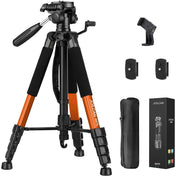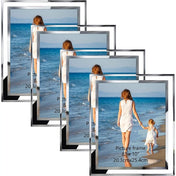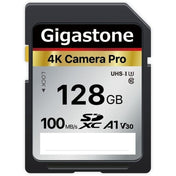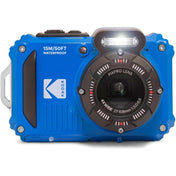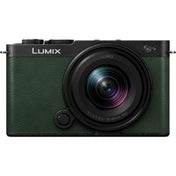When you're diving into the world of photography, the choice of lens can make or break your shot. Understanding the differences between wide-angle and telephoto lenses is paramount to capturing stunning images. In this guide, we will explore when to use each lens type and how to maximize their potential for your photography projects.
What is a Wide-Angle Lens?
A wide-angle lens is typically defined as a lens that has a focal length of 35mm or less. These lenses allow for a broader perspective, perfect for capturing expansive landscapes, architecture, and tight spaces. Here are some key characteristics of wide-angle lenses:
- Field of View: Wide-angle lenses capture a broader scene, making them perfect for landscape photography.
- Depth of Field: They generally have a greater depth of field, keeping more of the scene in focus.
- Perspective Distortion: Objects closer to the lens appear larger, which can be employed creatively.
When to Use a Wide-Angle Lens
Wide-angle lenses excel in various photography scenarios. Here are some occasions when you should definitely consider using one:
Landscape Photography
To capture the vastness of nature, nothing beats a wide-angle lens. This lens allows you to include more of the sky, foreground, and other elements of the landscape in your frames. Whether you're photographing mountains, oceans, or expansive fields, a wide-angle lens is essential.
Architecture and Interior Shots
In tight spaces or when trying to showcase the grandeur of a building, a wide-angle lens proves invaluable. This lens captures entire structures or rooms without having to step back too much. It's often the go-to for real estate photography.
Group Photos
If you're trying to fit a large group of people into one frame, a wide-angle lens makes it easy to get everyone in. Just be mindful of the distortion; standing too close can cause people at the edges to appear elongated.
What is a Telephoto Lens?
Telephoto lenses have a longer focal length of 70mm and above. These lenses allow you to zoom in on distant subjects, making them ideal for capturing details in wildlife, sports, and portrait photography. Key attributes of telephoto lenses include:
- Compression: Telephoto lenses compress space, making elements in the background appear closer to the foreground.
- Shallow Depth of Field: They often produce beautiful bokeh, isolating subjects and making them pop.
- Stability: When using a telephoto lens, a tripod or image stabilization features are essential due to magnified shakiness.
When to Use a Telephoto Lens
Understanding when to use a telephoto lens is crucial for capturing certain types of shots effectively. Here are some examples:
Wildlife Photography
When photographing animals in the wild, you usually need to keep a safe distance to avoid disturbing them. A telephoto lens allows you to capture intricate details—like a bird’s feathers or a deer’s gaze—without being too close.
Sports and Action Shots
During events like football games or marathons, a telephoto lens enables you to zoom in on distant athletes. It helps capture split-second actions that can be missed with a wider lens.
Portrait Photography
Telephoto lenses are often preferred for portraits due to their ability to create a shallow depth of field. This characteristic isolates the subject from the background, resulting in a beautiful bokeh effect that draws attention to the person being photographed.
Comparing Wide-Angle and Telephoto Lenses
Understanding the differences between wide-angle and telephoto lenses involves looking beyond just their specifications. Here are some factors to consider when choosing between the two:
Perspective and Composition
How you want your subjects to appear often determines whether you reach for a wide-angle or telephoto lens. Wide-angle lenses can exaggerate perspective and create dynamic compositions, while telephoto lenses offer a more compressed view that emphasizes the importance of the subject.
Light Requirements
Wide-angle lenses generally allow for more light due to their ability to open wider apertures. This can be especially beneficial for low-light situations like sunset photography or indoor events. Telephoto lenses, however, can often be heavier and require faster shutter speeds to minimize motion blur.
Leveraging Your 1175mAh Battery for Olympus
Throughout your photography adventures, having a reliable power source is essential. Especially when using power-hungry lenses, ensuring your camera remains charged is crucial. The 1175mAh battery for Olympus provides that extra boost you need during a long day of shooting. Always carry a spare battery when depending on either lens type to ensure you do not miss any important shots!
Practical Tips for Using Wide-Angle and Telephoto Lenses
Whether you're a beginner or seasoned photographer, mastering the use of wide-angle and telephoto lenses can elevate your work. Here are some practical tips to enhance your photographic skills:
Wide-Angle Tips
- Foreground Interest: Include an interesting foreground object to give depth to your wide shots.
- Experiment with Angles: Change your angles by getting low or adjusting your height for unique perspectives.
- Avoid Distortion: Keep your subjects at a reasonable distance from the edges of the frame to reduce distortion.
Telephoto Tips
- Clean Backgrounds: Be aware of distracting elements behind your subject; telephoto lenses can blur them out to help focus on your subject.
- Utilize a Tripod: Using a tripod will help maintain stability and sharp images, especially at longer focal lengths.
- Timing is Everything: For action shots, practice anticipating movement rather than reacting after it happens.
Final Thoughts: Your Lens Choice Shapes Your Story
The lens you choose dramatically impacts your photography storytelling. By understanding the strengths of both wide-angle and telephoto lenses, you’ll be better equipped to select the right tool for any situation. So the next time you pack your gear, remember the unique capabilities each lens brings to the table. Embrace your creativity, harness your passion, and let your photography journey soar!
Visit the Shopify or Wix store of a fellow user by following this link to their store. Please note that this is a promotional link, and we are not responsible for the content of the linked store.



